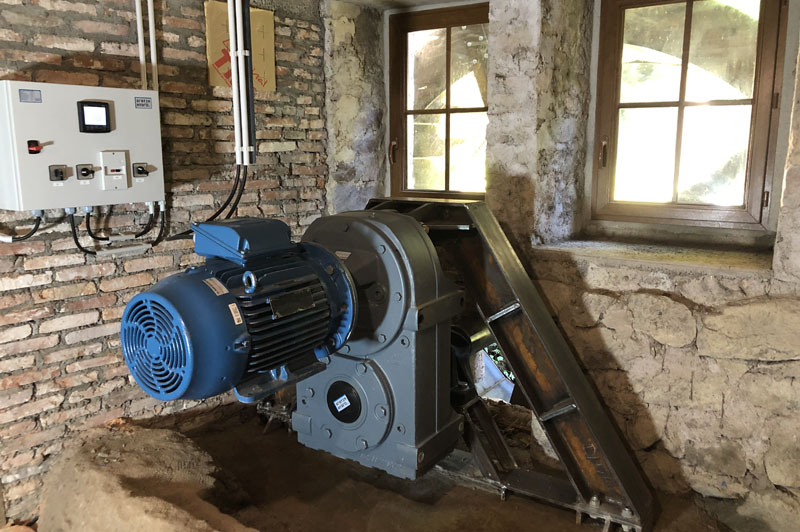WHICH GENERATOR IS SUITABLE FOR GENERATING ELECTRICITY WITH A WATERMILL?

If you want to generate electricity with a watermill, it is important to make the right choice at an early stage. A generator is suitable for a certain speed and power. If you go outside the specifications of the generator, you run the risk of damage, power loss or the generator does not work at all.
The capacity of a water wheel in a watermill is such that 24 or 48 VDC is not a realistic option. Higher DC voltages are downright dangerous. In this context I therefore only discuss 230-400 V generators.
The first question that needs to be answered is whether you are going to connect to the grid or in island situation If you work in an island situation an asynchronous generator is no longer a logical option. The necessary magnetic field is missing since you do not have the grid, nor a provision in the generator to generate that field.
In island operation you end up with a synchronous generator. For this you can use a permanent magnet generator (PMG) or a synchronous generator that has a field winding. With a PMG the voltage and frequency are directly dependent on the speed. The speed is then again a balance between the driving force of the watermill and the load. It is therefore very difficult to keep the voltage and frequency constant since there is a dynamic balance between the amount of water on the water wheel and the load. Great for heating since it is not sensitive to the frequency and within wide margins for voltage. The efficiency of a PM generator is high. A synchronous generator with field winding must have an AVR on board. This controls the voltage and frequency within reasonable margins and fairly quickly. The disadvantage is a slightly lower efficiency, but the electricity is suitable for wide applications.
If you are connected to the grid, you end up with an asynchronous generator or a PMG in combination with an inverter. An asynchronous generator only works with a 3 phase system (400V). If you don't have a 3 phase grid connection, you will end up with a PMG with inverter almost automatically. An asynchronous generator is simple and inexpensive. The efficiency is average and I would always go for an IE4 specification. The disadvantage is that the generator runs almost synchronously with the grid (asynchronous refers to the slip of a maximum of 5%). The waterwheel therefore has a constant speed. Great if you always have enough water. Otherwise you have to settle for a little less return or slightly adjust the gearing You always need a capacitor package to adjust the cos phi.
A PMG in combination with an inverter gives the most flexibility but also the highest costs. For a single-phase system (230 V) you cannot escape it. The efficiency of both the PMG and the inverter appear to be high. Please note that these high efficiencies only apply at full load. Part load is often not specified, but is generally much lower. With less than 50% load, the efficiency drops much faster. Inverters for solar panels are not suitable. Hydropower uses wind energy inverters.
Finally a list of some exotic species, or exotic ideas:
Do you have any questions or suggestions? Then contact us.